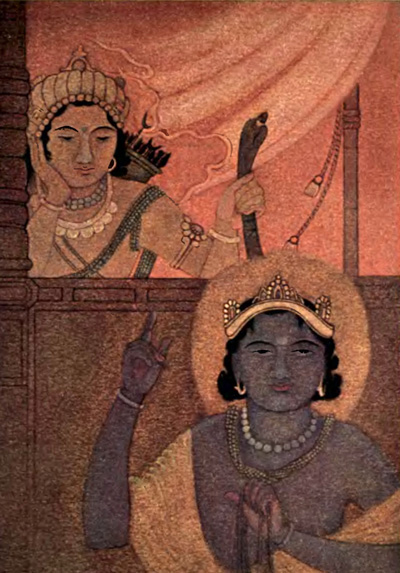
The story of Nachiketa and Yama from the Katha Upanishad is a profound allegory about the human quest for ultimate knowledge and liberation. It unfolds in ancient India, where a young boy named Nachiketa grapples with the existential question of what lies beyond death.
Nachiketa's journey begins with his father, Vajashravasa, performing a grand ritual. Driven by a desire for heavenly rewards, Vajashravasa donates only old and unproductive cows, a mockery of the true spirit of the ritual. Witnessing this hypocrisy, Nachiketa is deeply troubled. He confronts his father, asking, "To whom will you offer me, your own son?" In a moment of anger and shame, Vajashravasa utters a fateful curse: "I offer you to Yama, the Lord of Death!"
Undeterred, Nachiketa sets out on a solitary quest to Yama's abode. He arrives at the gates of the underworld and waits patiently for three days without food or water. Yama, upon returning, is astonished by the boy's unwavering determination. Impressed by his courage and seeking to compensate for the inhospitable wait, Yama grants Nachiketa three boons.

Nachiketa, wise beyond his years, carefully chooses his boons. First, he asks for peace and reconciliation for his father, demonstrating his filial piety and concern for the living. Second, he seeks knowledge of the intricacies of the sacrificial ritual, showcasing his interest in the realm of spiritual practice and transformation.
For his final boon, Nachiketa poses the ultimate question: "What happens after death? What is the nature of the Atman, the eternal Self?" This audacious question, one that even the gods pondered with uncertainty, throws Yama into a dilemma. He initially offers Nachiketa worldly treasures and sensual pleasures, tempting him with the impermanent joys of the earthly realm.
Nachiketa, however, rejects these material distractions. He insists on the knowledge of the Self, understanding that true liberation lies beyond the fleeting pleasures of the world. Seeing Nachiketa's unwavering resolve, Yama finally relents and unveils the profound truth of the Atman. He describes the Self as imperishable, unchanging, and eternal, unlike the physical body that is subject to decay and death.
Yama uses metaphors and parables to explain the nature of the Self. He compares it to a chariot, the body being the chariot, the senses the horses, the mind the reins, and the intellect the charioteer. He guides Nachiketa to understand that the true Self, the Atman, is distinct from the chariot and its components, the eternal observer that transcends the limitations of the mortal realm.
The story of Nachiketa and Yama holds immense philosophical and spiritual significance. It highlights the impermanence of the material world and the ultimate reality of the Atman. Nachiketa's courage in seeking the truth and Yama's eventual revelation offer a roadmap for spiritual liberation, urging us to look beyond the illusions of the senses and seek the eternal Self within.
This timeless tale continues to resonate with seekers of truth across generations, reminding us that the greatest quest is not for fleeting worldly pleasures but for the enduring wisdom of the Self. It encourages us to confront our anxieties about death and embrace the possibility of a higher reality that transcends the limitations of our mortal existence.
By delving deeper into this rich and multifaceted narrative, we can gain valuable insights into the human condition, the nature of reality, and the ultimate purpose of our existence. The story of Nachiketa and Yama serves as a beacon of hope, guiding us on the path towards self-discovery and liberation.
Try out the other sections